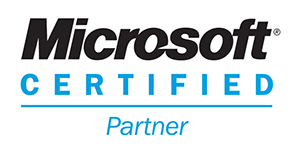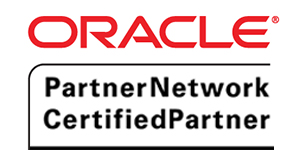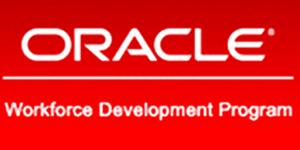
ONLINE
Tardes: 4,5 meses (aproximado)
Fecha de inicio: Según calendario
Horario
Fin de semana: Viernes de 18 a 21 horas y sábados de 9 a 14 horas: clases y laboratorio.
Horas Lectivas
330 horas repartidas de la siguiente manera:
-180 horas lectivas y guiadas por el Instructor.
-150 horas de e-learning.
Modalidad Abierta
El Master Cisco CCNP Certified Network Professional V 6.0 tiene una duración de 330 horas.
El curriculum CCNP proporciona los conocimientos y habilidades necesarios para desarrollar y mantener los servicios y aplicaciones de una infraestructura de red complemente integrada. El curso se centra en las habilidades avanzadas requeridas para manejar redes punto a punto, peor va un paso más allá del enrutamiento y la conmutación para incluir redes inalámbricas, seguridad y voz. Incluye aspectos tales como redes convergentes, Calidad del Servicio (QoS), Redes Privadas Virtuales (VPNs) y tecnologías de banda ancha.
El CCNP integra ingeniería de dispositivos y servicios de última generación, que permite llevar datos de forma rápida y concurrente de servicios de voz, video, wireless y seguridad optimizada.
El curriculum incluye tres exámenes de certificación requeridos para obtener la certificación CCNP. Los tres cursos son:
-CCNP ROUTE: Implementing IP Routing - Examen ROUTE (642-902)
-CCNP SWITCH: Implementing IP Switching ¿ Examen SWITCH (642-813)
-CCNP TSHOOT: Maintaining and Troubleshooting IP Networks ¿ Examen TSHOOT (642-832
Los contenidos del Master siguen fielmente el programa oficial de CISCO NETWORKING ACADEMY destinados a la obtención por parte del alumno de la Certificación CCNP, altamente valorada en el mercado laboral.
Profesorado
-Profesionales avalados por el fabricante.
Objetivos de Certificación - CCNP
Exámenes válidos para las certificaciones CCNP, CCDP, CCIP y CCIE Routing _ Switching o CCIE Communications _ Services
-642-902 - ROUTE
-642-813 ¿ SWITCH
-642-832 ¿ TSHOOT
Destinatarios
-Personas con la certificación CCNA que buscan certificarse en CCNP, CCIP, CCSP, CCDP o CCIE.
-Administradores de Red
-Ingeniero de Sistemas ¿ Nivel 2
-Técnico de Redes.
-Ingeniero de Despliegue
CCNP ROUTE: Implementing IP Routing
ROUTING SERVICES
- Assessing Complex Enterprise Network Requirements
- Reviewing IP Routing Principles
-Creating and Documenting an Implementation Plan
CONFIGURING THE ENHANCED INTERIOR GATEWAY ROUTING PROTOCOL
-EIGRP Capabilities and Attributes
-Planning EIGRP Routing Implementations
-Configuring and Verifying EIGRP
-Configuring and Verifying EIGRP in an Enterprise WAN
-Configuring and Verifying EIGRP Authentication
-Optimizing EIGRP Implementations
CONFIGURING THE OPEN SHORTEST PATH FIRST PROTOCOL
-Understanding OSPF Terminology and Operation
-OSPF Packets
-Planning OSPF Routing Implementations
-Configuring and Verifying Basic OSPF
-Understanding OSPF Network Types, Link State Advertisements, and Tables
-Configuring and Verifying Advanced OSPF Features
-Configuring OSPF Authentication
MANIPULATING ROUTING UPDATES
-Assessing Network Routing Performance Issues
-Controlling Routing Update
-Using Multiple Routing Protocols on a
-Implementing Route Redistribution
IMPLEMENTING PATH CONTROL
-Understanding Path Control
-Implement Path Control using Offset-Lists
-Implement Path Control using IP SLA
-Implement Path Control using Policy Based Routing
IMPLEMENTING A BORDER GATEWAY PROTOCOL SOLUTION FOR ISP CONNECTIVITY
-Planning the Enterprise-to-ISP Connection
-Understanding BGP Terminology and Operation
-Configuring and Verifying BGP
-Basic BGP Path Manipulation Using Route Maps
-Inbound and Outbound EBGP Path Selections
IMPLEMENTING ROUTING FACILITIES FOR BRANCH OFFICES AND MOBILE WORKERS
-Planning the Branch Office Implementation
-Analyzing Services in the Branch Office
-Routing Traffic to the Branch Office
-Planning for Mobile Worker Implementations
-Routing Traffic to the Mobile Worker
IMPLEMENTING IPV6 IN AN ENTERPRISENETWORK
-IPv6 Addressing in an Enterprise Network
-Assigning IPv6 Addresses
-Routing IPv6 Traffic
-Tunneling IPv6 Traffic
-IPv6 Static and Dynamic NAT-PT
CCNP SWITCH: Implementing IP Switching
ANALYZING THE CISCO ENTERPRISE CAMPUS ARCHITECTURE
-Campus Network Design Principles
-Applying the Lifecycle Approach to Campus Design
IMPLEMENTING VLANS IN CAMPUS NETWORKS
-Implementing VLAN Technologies in a Campus Network
-Configuring VLANs and Trunks
-Configuring Link Aggregation
IMPLEMENTING SPANNING TREE PROTOCOL
-Spanning Tree Protocols
-Configuring Spanning Tree
-Spanning Tree Enhancements
-Troubleshooting Spanning Tree Issues
IMPLEMENTING INTERVLAN ROUTING
-Describing InterVLAN Routing
-Configuring InterVLAN Routing
-Implementing Dynamic Host Configuration Protocol in a Multilayer Switched Environment
-Deploying CEF-Based Multilayer Switching
IMPLEMENTING HIGH AVAILABILITY AND REDUNDANCY IN A CAMPUS NETWORK
-Implementing and Monitoring High Availability
-Understanding Supervisor Redundancy
-Understanding Gateway Redundancy Protocols
-Configuring Layer 3 Redundancy with HSRP, VRRP, and GLBP
-Implementing Server Load Balancing
SECURING THE CAMPUS INFRASTRUCTURE
-Switch Security Fundamentals
-VLAN Attacks
-MAC-Based Attacks
-Spoof Attacks
-Securing Network Switches
-Troubleshooting Performance and Connectivity
PREPARING THE CAMPUS INFRASTRUCTURE FOR ADVANCED SERVICES
-Assessing Converged Traffic in the Campus Infrastructure
-Understanding QoS
-Implementing IP Multicast
-Preparing the Campus Infrastructure to Support Wireless
-Preparing the Campus Infrastructure to Support Voice
-Preparing the Campus Infrastructure to Support Video
CCNP TSHOOT: Maintaining and Troubleshooting IP Networks
PLANNING MAINTENANCE FOR COMPLEX NETWORKS
-Applying Maintenance Methodologies
-Maintenance Processes and Procedures
-Network Maintenance Tools, Applications, and Resources
TROUBLESHOOTING PROCESSES FOR COMPLEX ENTERPRISE NETWORKS
-Troubleshooting Methodologies
-Implementing Troubleshooting Procedures
-Integrating Troubleshooting into the Network Maintenance Process
USING MAINTENANCE AND TROUBLESHOOTING TOOLS AND APPLICATIONS
-Using Cisco IOS Software for Maintenance and Troubleshooting
-Using Specialized Maintenance and Troubleshooting Tools
MAINTAINING AND TROUBLESHOOTING CAMPUS SWITCHED SOLUTIONS
-Troubleshooting VLANs
-Troubleshooting Spanning Tree
-Troubleshooting Switched Virtual Interfaces (SVIs) and InterVLAN Routing
-Troubleshooting First Hop Redundancy Protocol Operation
MAINTAINING AND TROUBLESHOOTING ROUTING SOLUTIONS
-Troubleshooting Network Layer Connectivity
-Troubleshooting EIGRP
-Troubleshooting OSPF
-Troubleshooting Route Redistribution
-Troubleshooting BGP
TROUBLESHOOTING ADDRESSING SERVICES
-Identifying Common IPv4 Addressing Service Issues
-Identifying Common IPv6 Routing and Tunneling Issues
TROUBLESHOOTING NETWORK PERFORMANCE ISSUES
-Troubleshooting Network Application Services
-Troubleshooting Performance Issues on Switches
-Troubleshooting Performance Issues on
TROUBLESHOOTING CONVERGED NETWORKS
-Troubleshooting Wireless Issues in a Converged Network
-Troubleshooting Unified Communications Issues in a Converged Network
-Troubleshooting Video Issues in a Converged Network
MAINTAINING AND TROUBLESHOOTING NETWORK SECURITY IMPLEMENTATIONS
-Troubleshooting Secure Networks
-Troubleshooting Management Plane Security
-Troubleshooting Control Plane Security
-Troubleshooting Data Plane Security
-Troubleshooting Branch Office and Remote Worker Connectivity
REVIEW AND PREPARATION FOR TROUBLESHOOTING COMPLEX ENTERPRISE NETWORKS
-Troubleshooting Complex Environments















